CURATOR’S STATEMENT
As an American, I am really fucked up right now. There’s no other way to put it. The implosion of the American Empire may be schadenfreudically stimulating to watch from the outside and suffocatingly inane from the inside, but as an American watching from Sydney it has been utterly horrific. It’s like watching a drug addict walk closer and closer to the edge of a subway platform as a train full of rapists and gunmen come barreling forward and as you try to shout out a warning, yelling at the top of your lungs, you remember you’re millions of miles away in fuckin’ Australia. Rewatching Dani Ahrens’s uncomfortably hilarious, and truly horrifying film The History Project, 5 years, 3 undemocratic judges, 2 bullshit elections, 1 pandemic and 118 mass shootings and a capital riot after it was first screened, perfectly illustrates the stage that was set for America’s spiral. And no matter how you lean, you can’t deny America be spirallin’. America is dead, and its carcass is being torn apart, its organs sold for profit or sacrificed at the altar of a false god.
America is dead. Americans are not.
America is a weird place. Many people think they know what America is, but a true definition outside of a passport is not easy. Some art intelligentsia flaunt their theories as fact (“Pop Art is definitely American because capitalism *fart noise* and consumerism *jerk off motion*”). Others turn to a moral histography derived from a colonial and imperialist legacy, all words I used for no reason other than to sound smart and righteous (especially histography). And I get it, I should be grateful for such criticism, especially when the conservative, theocratic “critique” is usually not much more than a pearl-clutching racist monkey flinging its shit at an O’Keefe because its terrified of the vagina flowers and the implication of antipatriarchy.
The main point I am trying to make, with this show in particular, is that there are people in my homeland who are ultimately just people. What I am putting forward is that Americans, and everyone who our exports – good and bad – have inspired, are steered, if not simply encouraged, toward a destiny of freedom.
In 1999 Takashi Murakami wrote that art’s purpose is “vague.” He was devising his Superflat Theory, after returning from New York to Japan, where until that point he trained in traditional and rigidly defined nihonga painting. America did not liberate Murakami. Instead he felt liberated by people expressing themselves first, and calling it art second. Lots of labels get put on art – a dollar value, cultural significance, intellectual importance, etc. Those all have merit. But at the core, art is nothing without free expression, both in the process of production and the process of reception.
America is a land of extremes and poles. Americans are A. Americans are B. They are C, D, E, F, G… Those are labels, and while many Americans find safety in their labels, this collection comes from the young, American underlayer that see labels as just another form of entrapment. We want to live out the liberal ideals we were raised on, free to choose our labels but not be defined by them. That’s the deeper significance of Dani Ahrens The History Project: What is on the one hand a deeply unsettling indictment of the American educational system, is also a labour of passion composed of genuine expressions pushing up against the confines of historical and educational parameters. For us younger Americans, we don’t want to be just Americans. We want to just be ourselves.
That is the truth captured in this show. Despite all the preconceived notions one has about the United States and its people, there are no hard and fast definitions. “We the people” are just people, and when left to be free, we the people make things without the burdens of art history, politics, and cuture weighing down upon us. Oftentimes, in such a direct form of expression, the result might not fit expectations, but it is no less made with dedication and passion. To receive this work is not always an easy adjustment, especially in contemporary art where we’re told our industry (and it is an industry, even if you’re not selling) is the beacon of open-mindedness and morality. I know some people will be offended or discomforted by this work, but what draws me to these artists is that those reactions do not define the works. Art’s purpose is vague.
Alex Bienstock’s “omni-cringe” movement asks you to sit with that which is discomforting. Meg Spectre’s performances implode parody leaving room for something more. The Peperoni Zone videos are dumb, yes, but does that define them? Some of you will think you get this immediately. Settle down Brad Troemel. Push past the cringe. Don’t boast the lulz. That knee-jerk reaction is not the point. What makes me happy about this show is that the art exists and you are free to choose the point.
What remains of the land of the free and home of the brave? I believe the remnants, and tools to rebuild (or, rather, build something new and improved) are to be found in artwork, but not just any artwork. Not only Americans, but human beings in general, need art (in addition to what we have now) that at its very core is unbridled expression. Essentially the freedom to express yourself unconditionally, given sensory form. The world feels unfree, so I yearn for art that is. And that hope, hustle, and naïve belief that that freedom exists out there, that is the American way I was brought up with. You might call that cringey, but if you decide to take a break from searching for justifications to have art in your life and just let it happen, you are totally welcome to come chill with us.
- Gregory Uzelac, July 2022
DANI AHRENS
History Project, 2016. Projected Video, 90 minutes.
Dani Ahrens is an artist, comedian, and animator from Cincinnati, Ohio. Produced with Jason Flood and directed by Ahrens, The History Project is a dark-comedy documentary, exposing the flaws of the American education system via its greatest victims: America's Youth.
Often, modern history classes will assign video projects in lieu of lessons: teen-produced short films, filmed to premiere in-classroom for fellow students. The intent is to educate their peers on an event or subject they have not been taught yet, themselves. The History Project curates a considerable collection of these projects chronologically to tell the history of the United States. The result is a shocking glimpse into what is taught in American classrooms, how it is taught, and the ways sensationalism can warp the perception of history. For America: This is our past, told by our future
Please Note: This film contains footage of young people in blackface, as well as racial epithets and overall cultural, racial, and historical insensitivity.
ALEX BIENSTOCK
Office Drawings, 2021. Inkjet prints on A4 paper.
Alex Bienstock grew up in West Orange, NJ but was born in New York City and now lives in Brooklyn. He works with images, objects, video, sound, curation, social media, text, and live performance, yet doesn’t really distinguish those things from everyday public and private life. He's released two books with Safety Propaganda and Memory Pill and has been published in Art in America and Cultured Magazine, as well as participating in solo and group exhibitions all over the world, including Italy, Germany, Switzerland, and England. He has also been fortunate enough to perform at The Queens Museum and the NPC Film Festival.
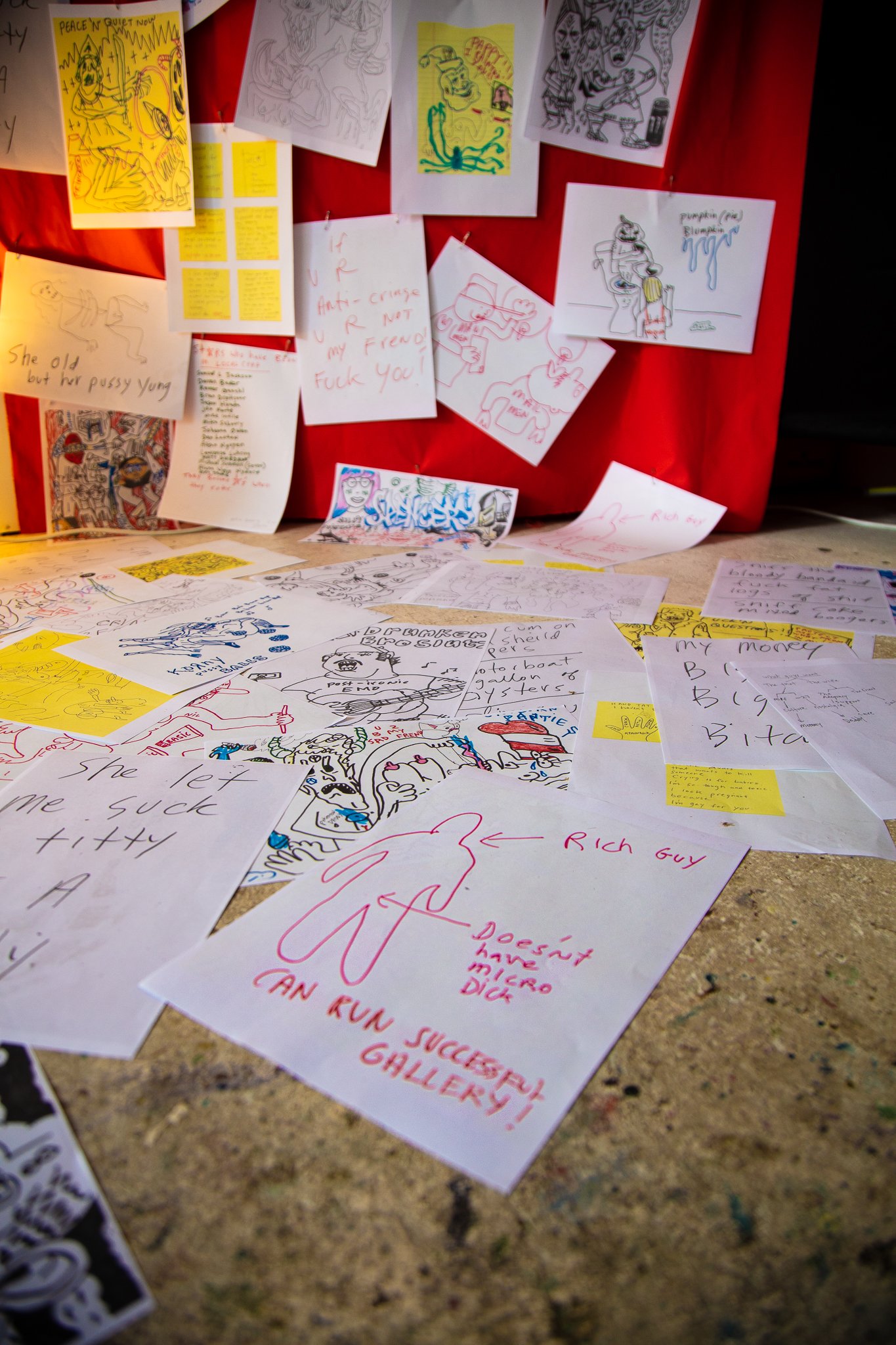
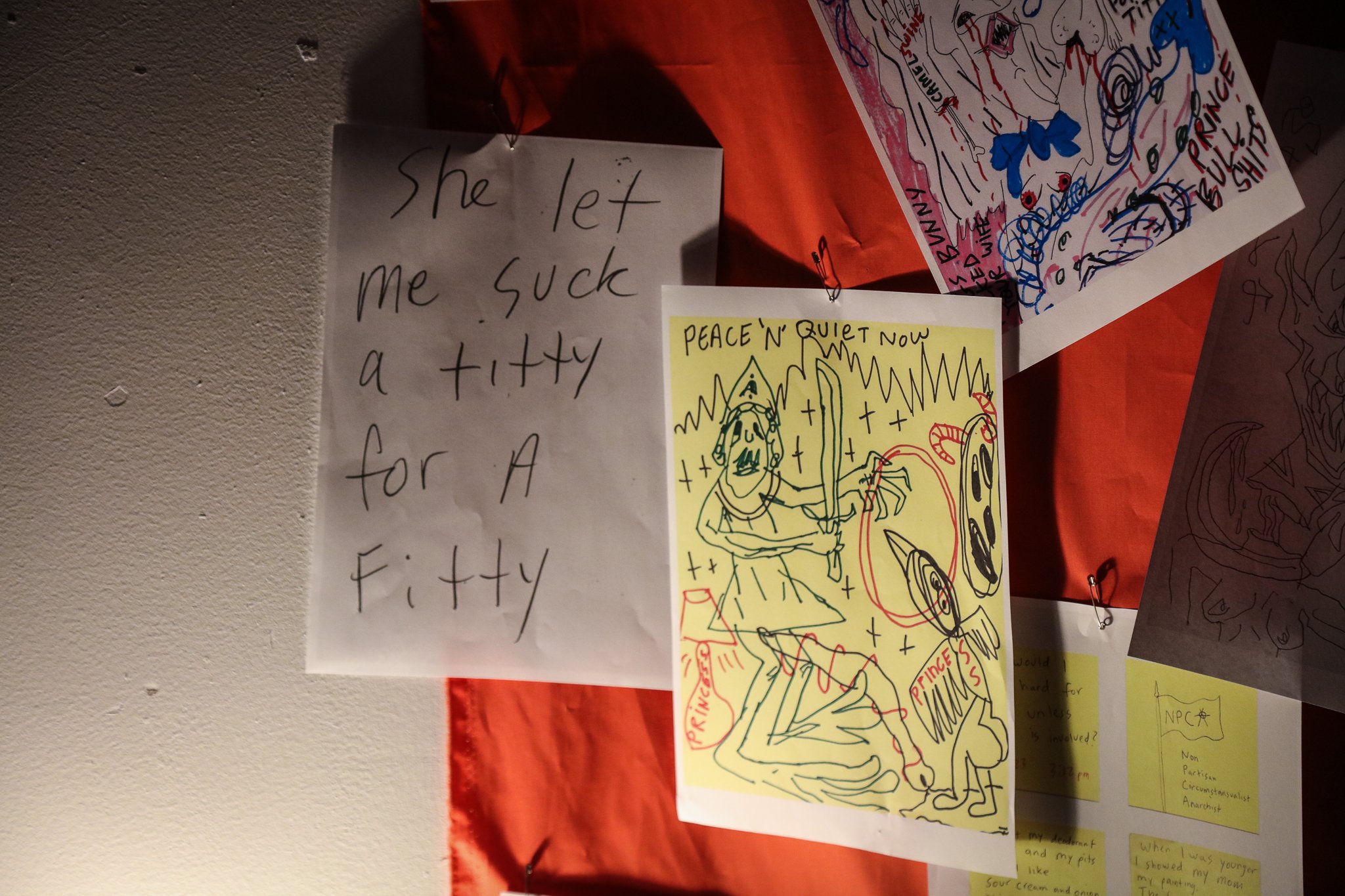

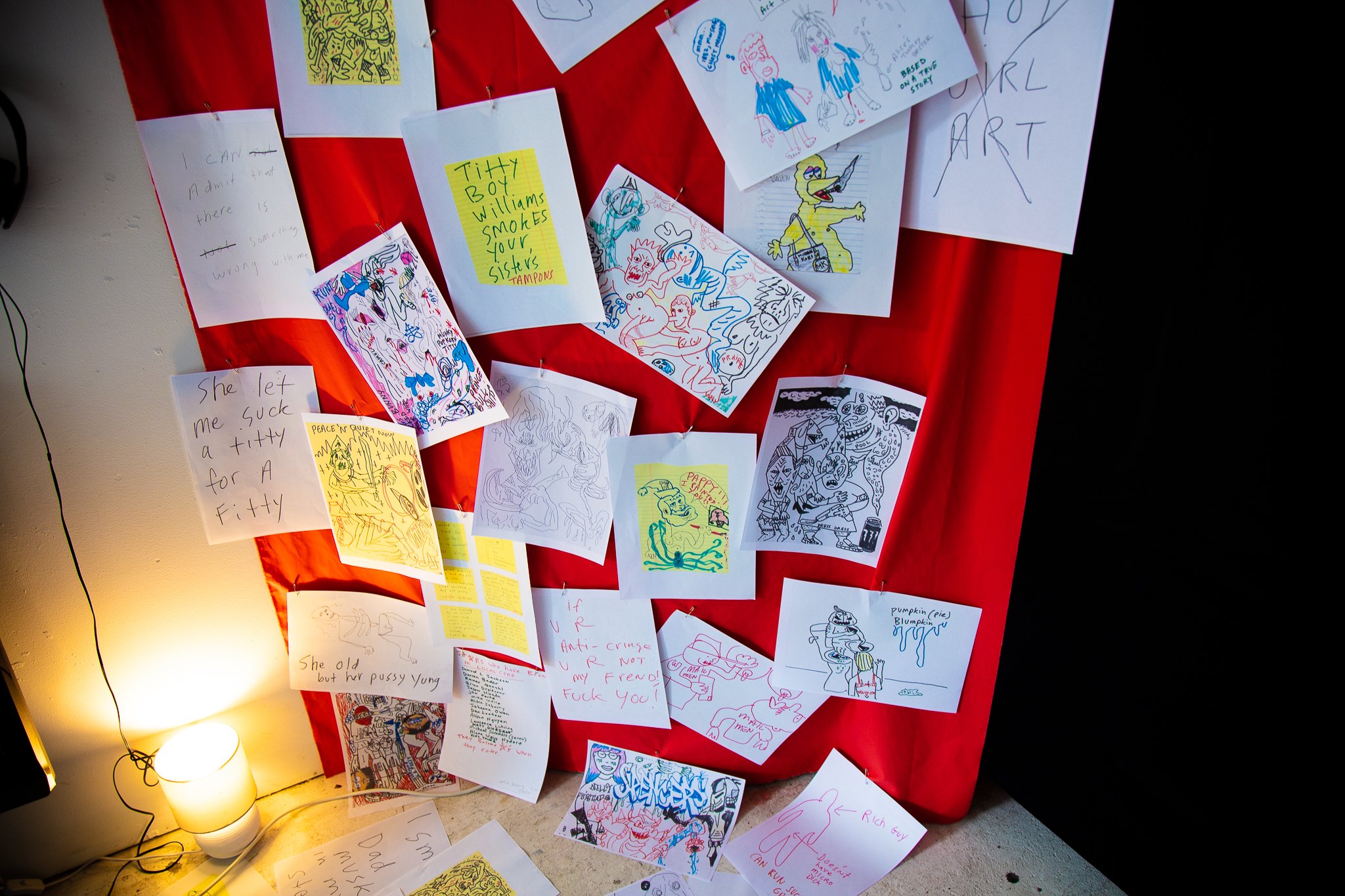
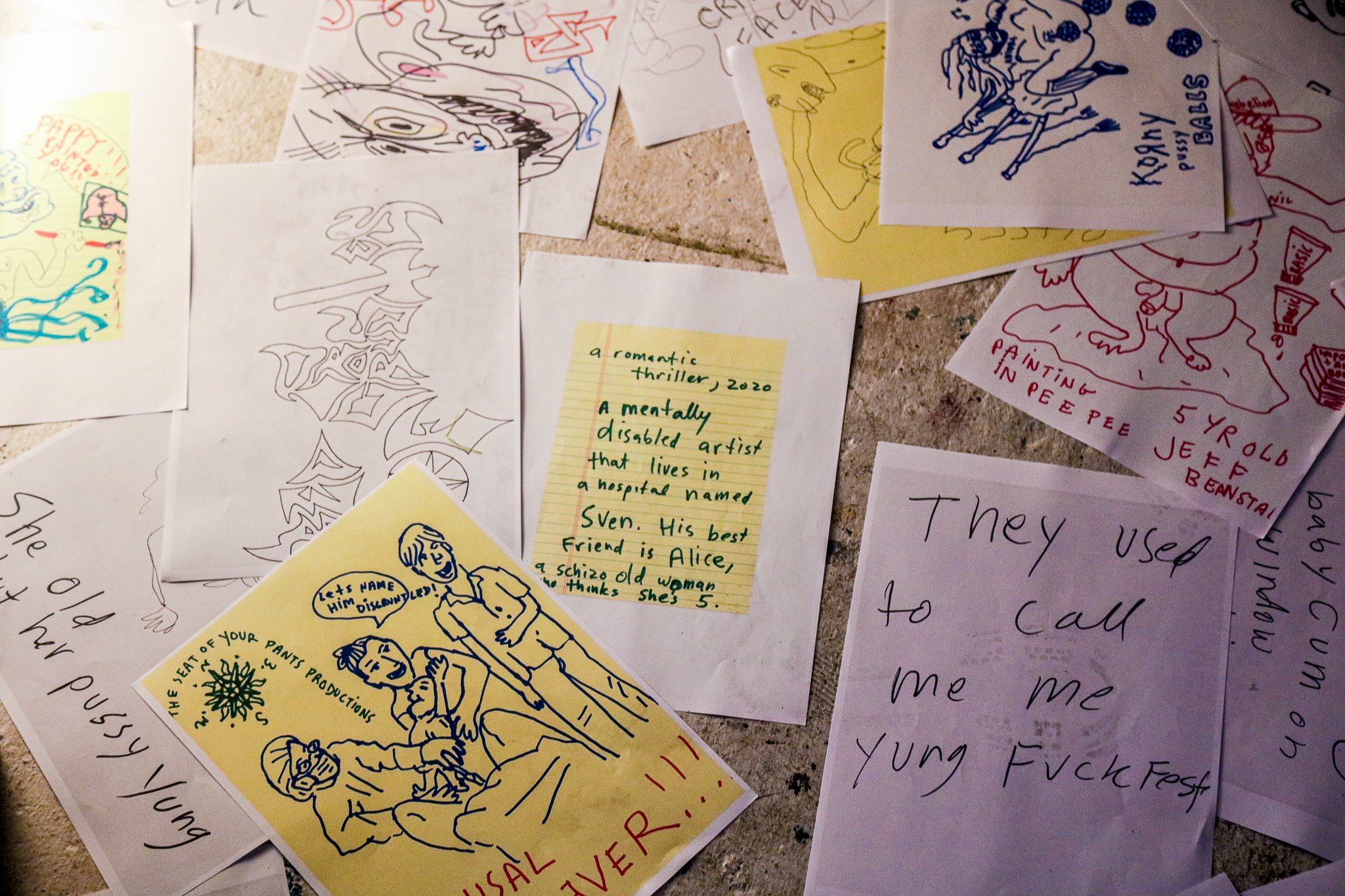
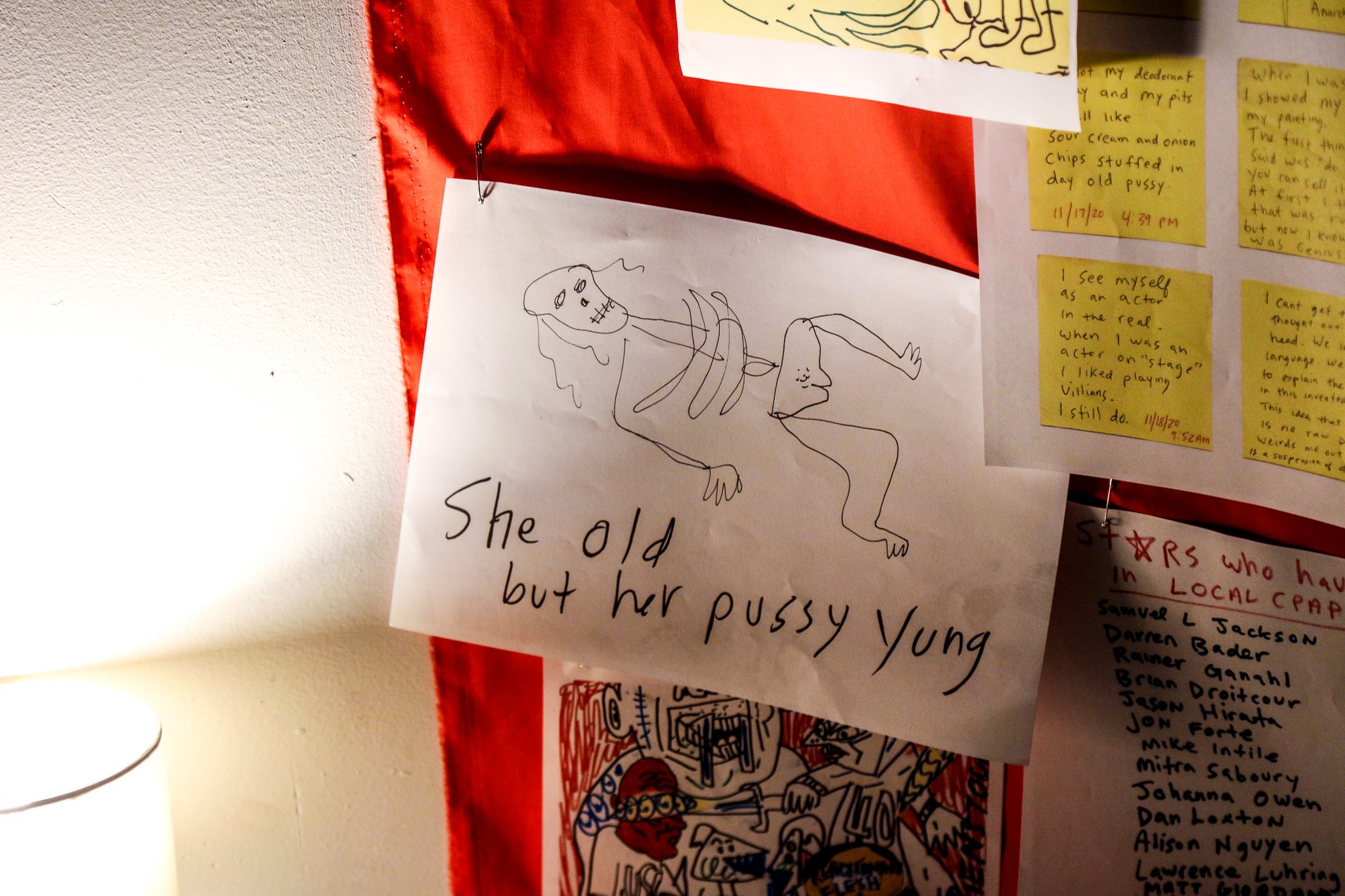
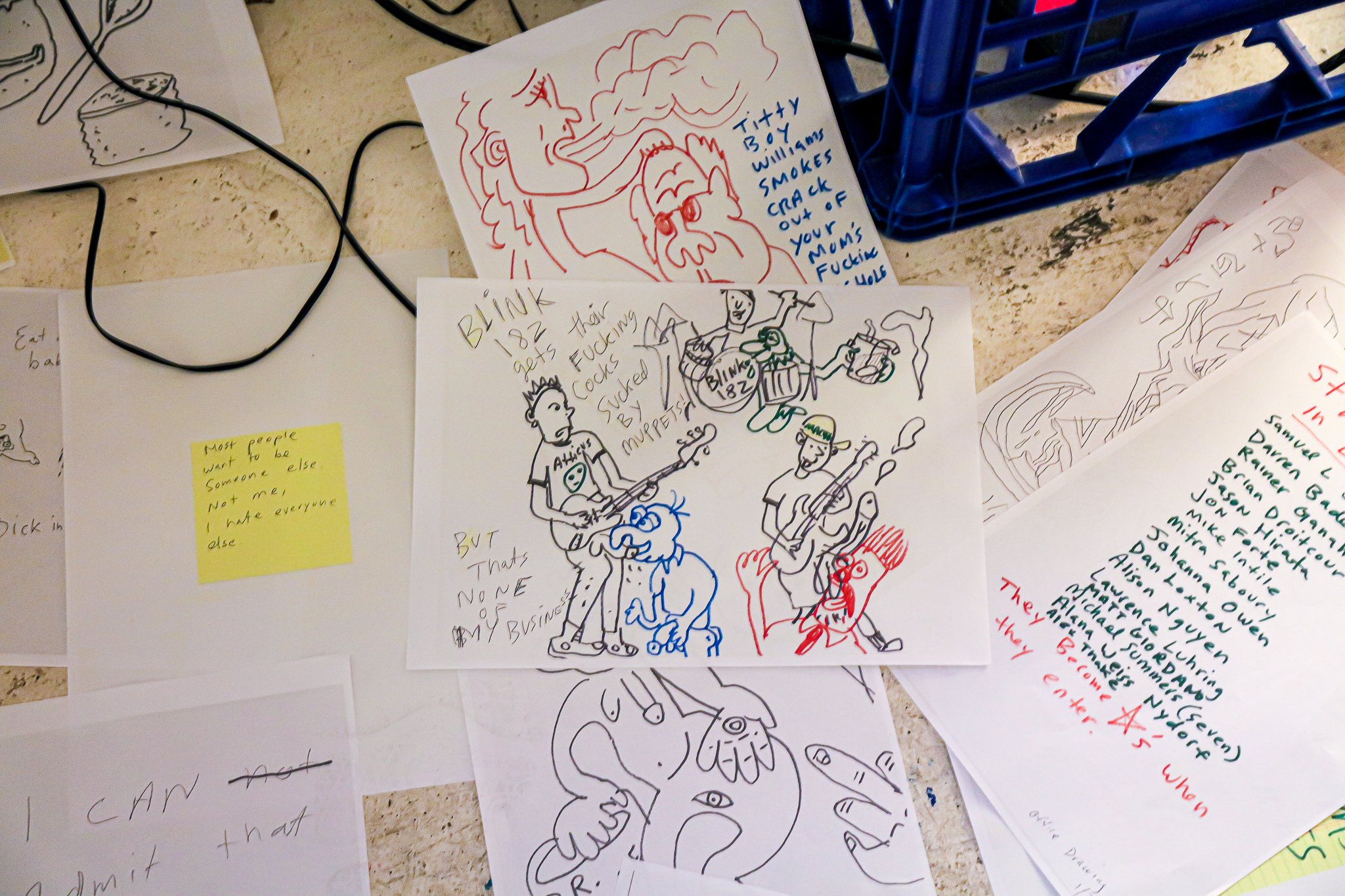
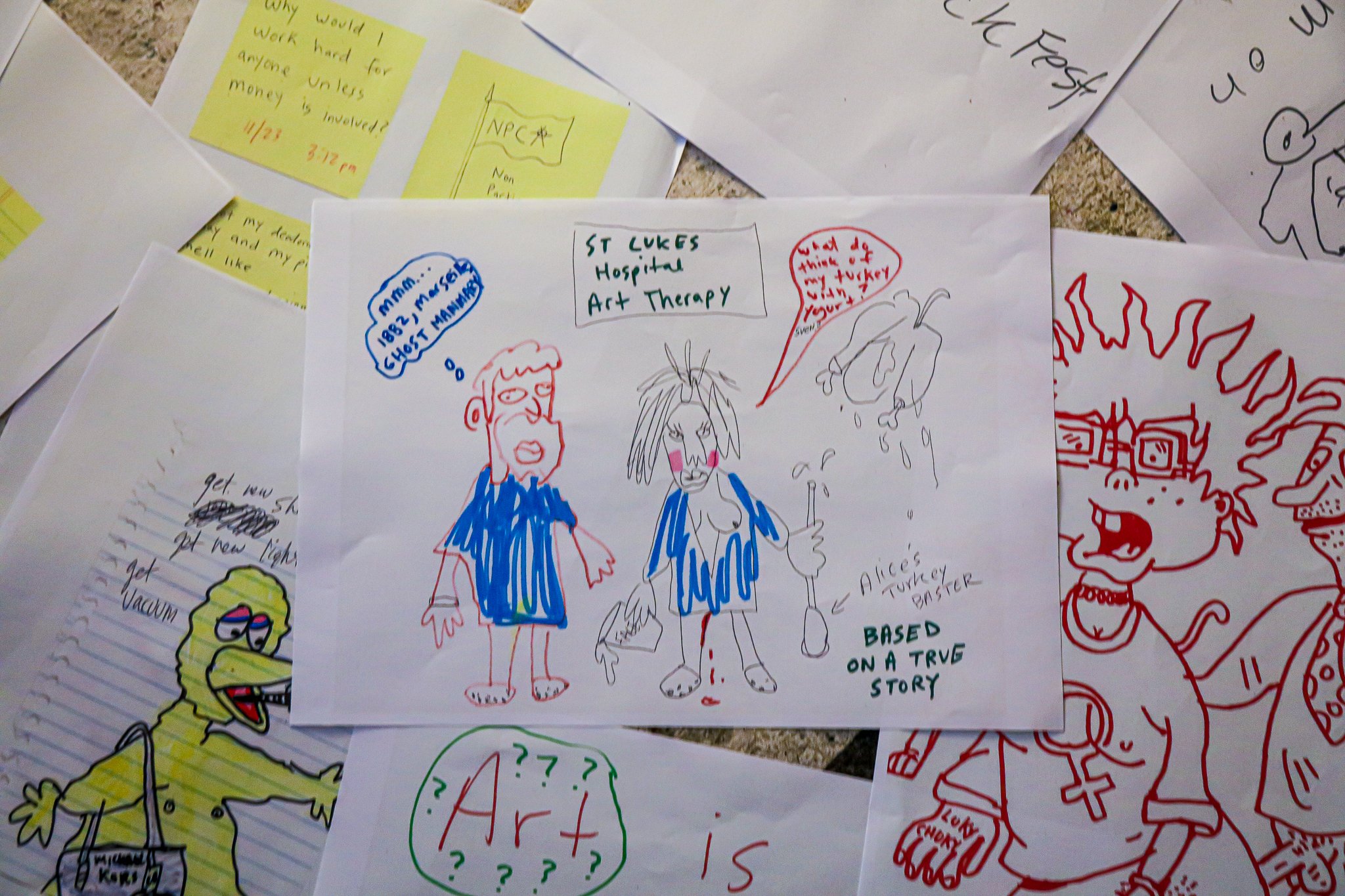
























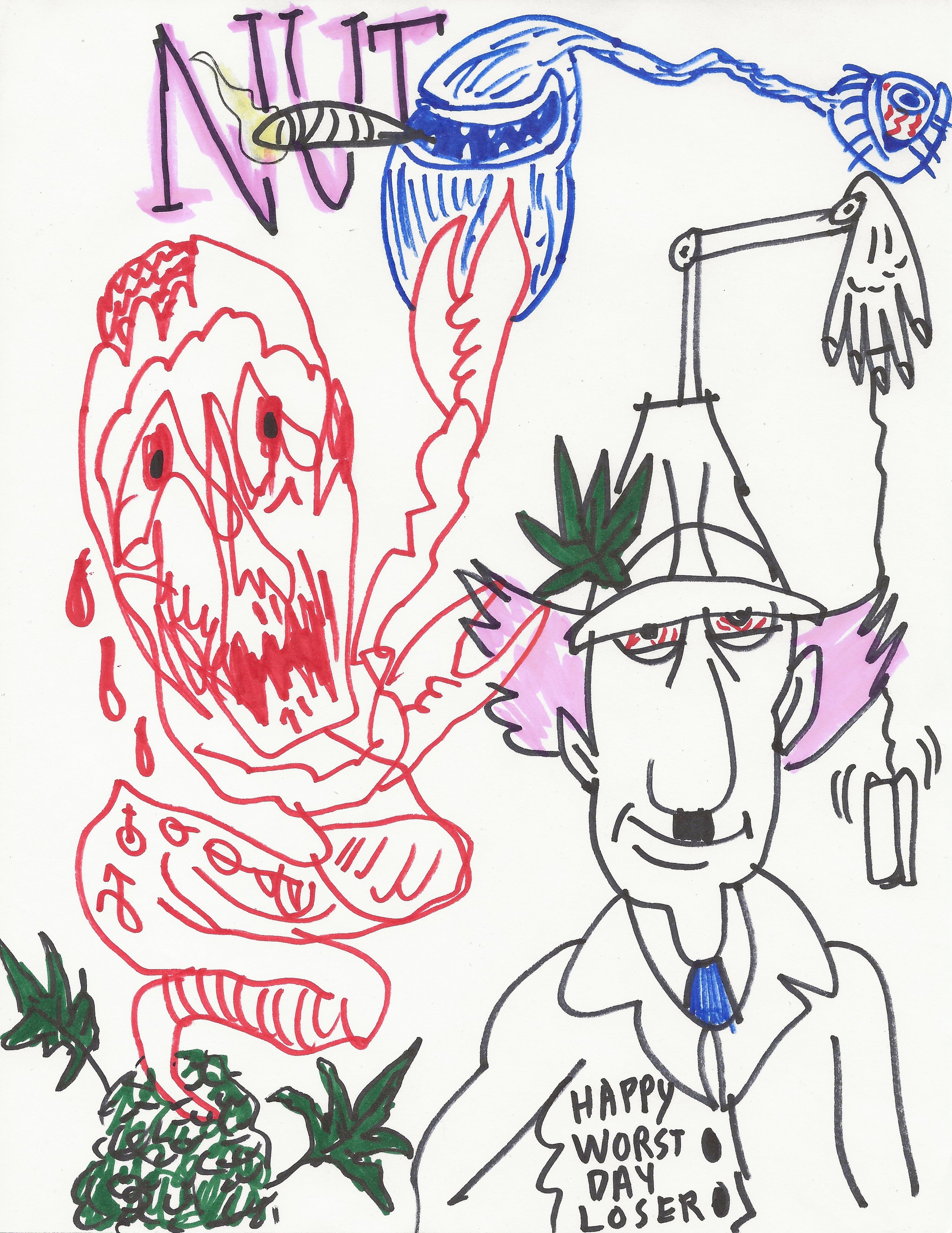


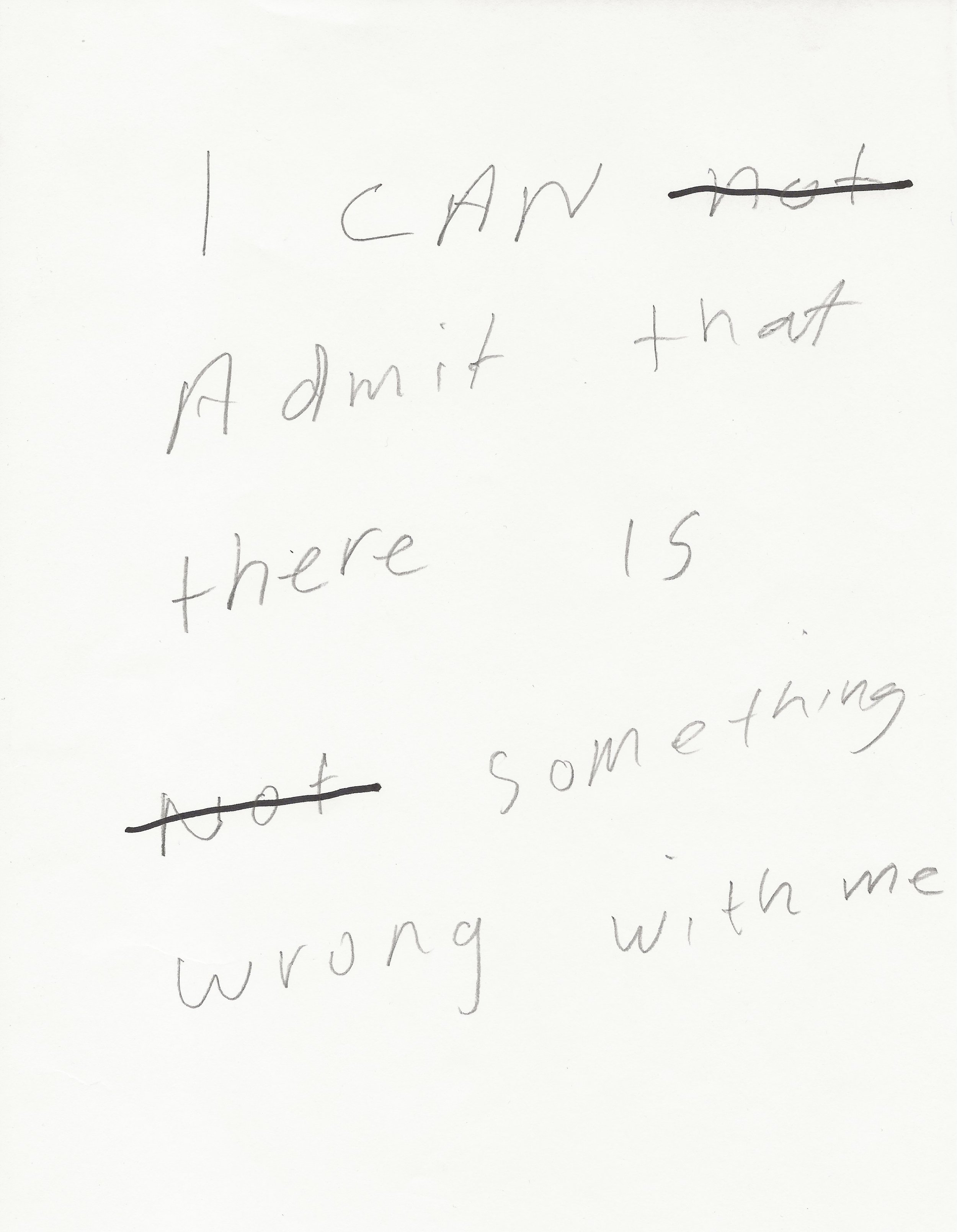
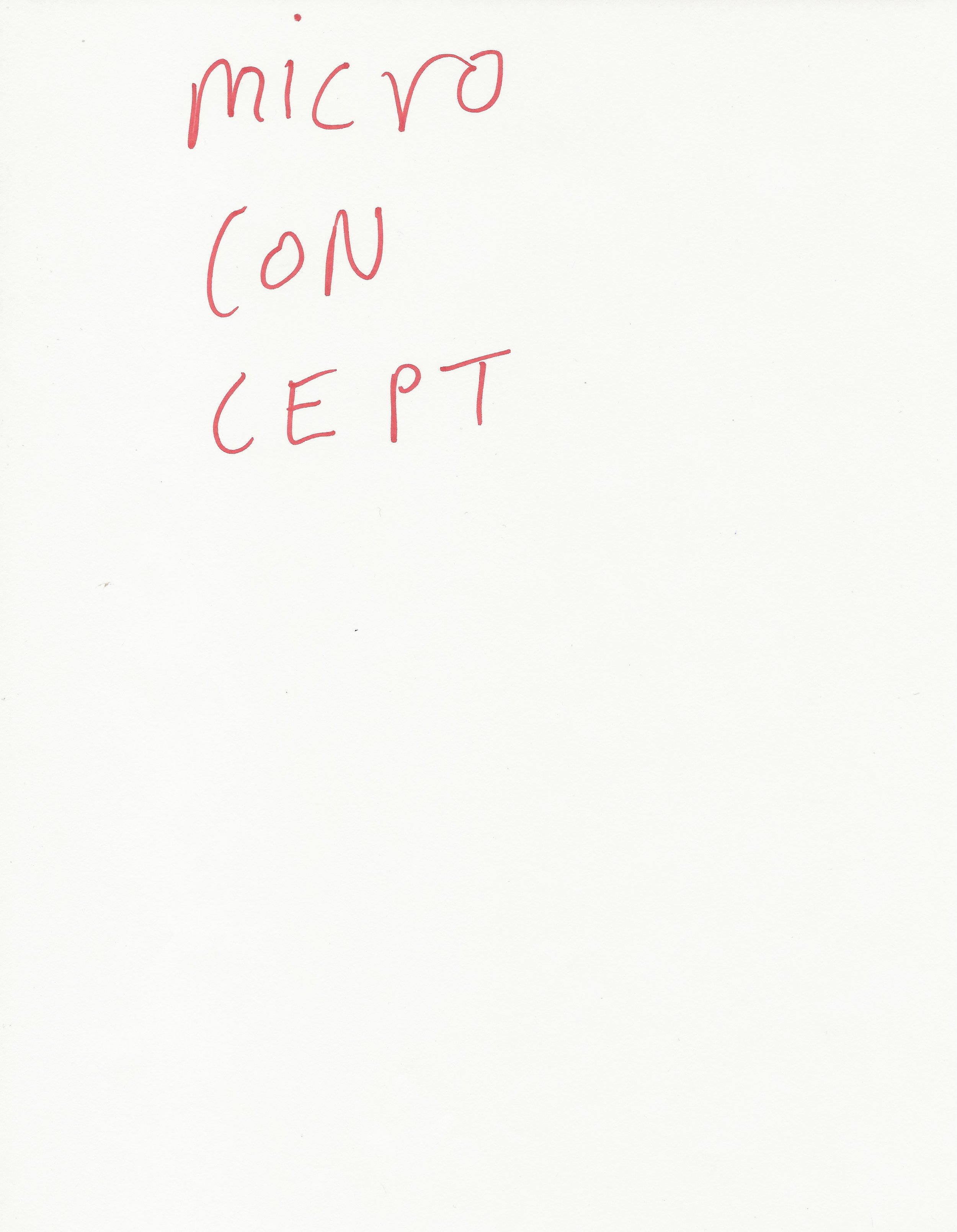
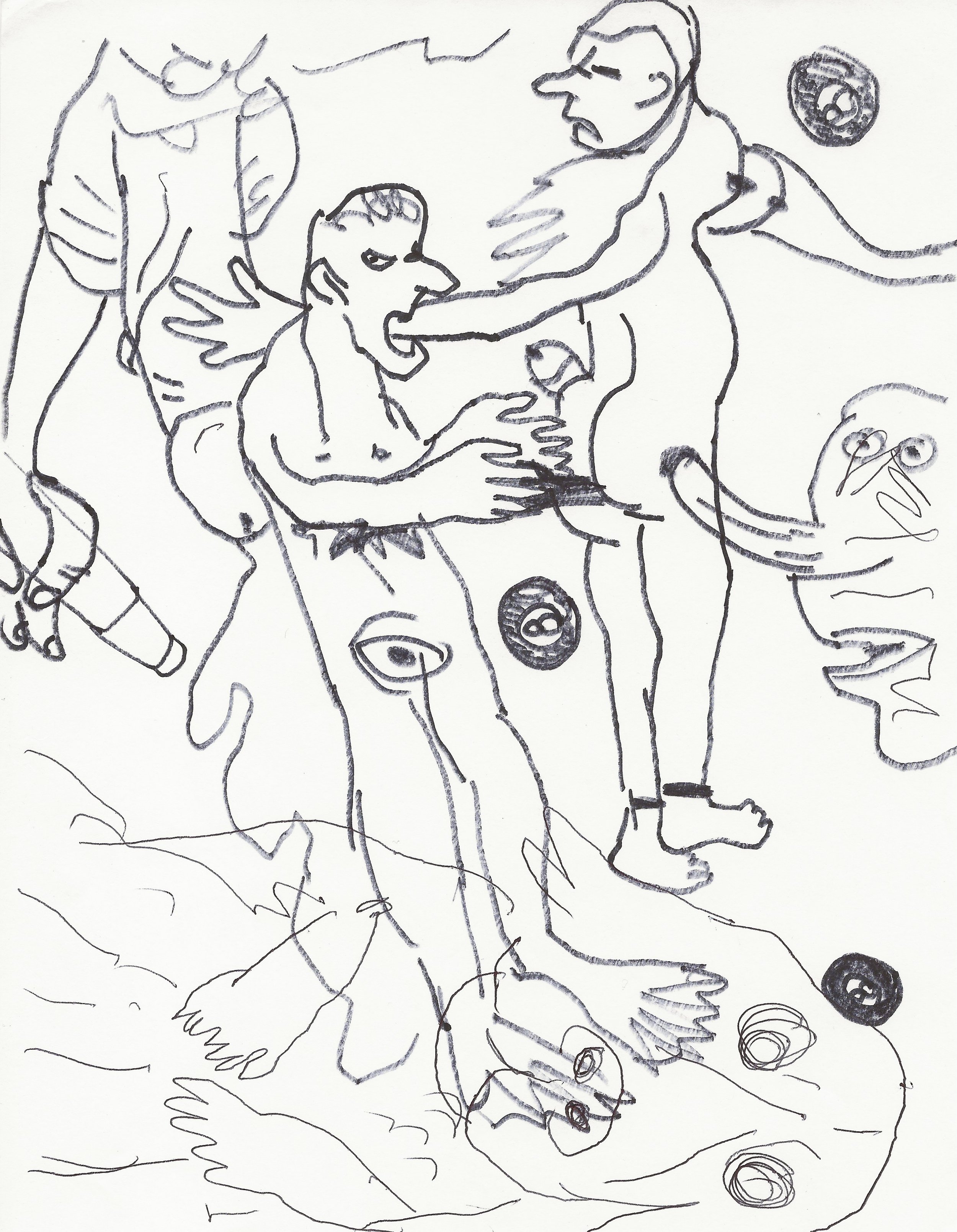
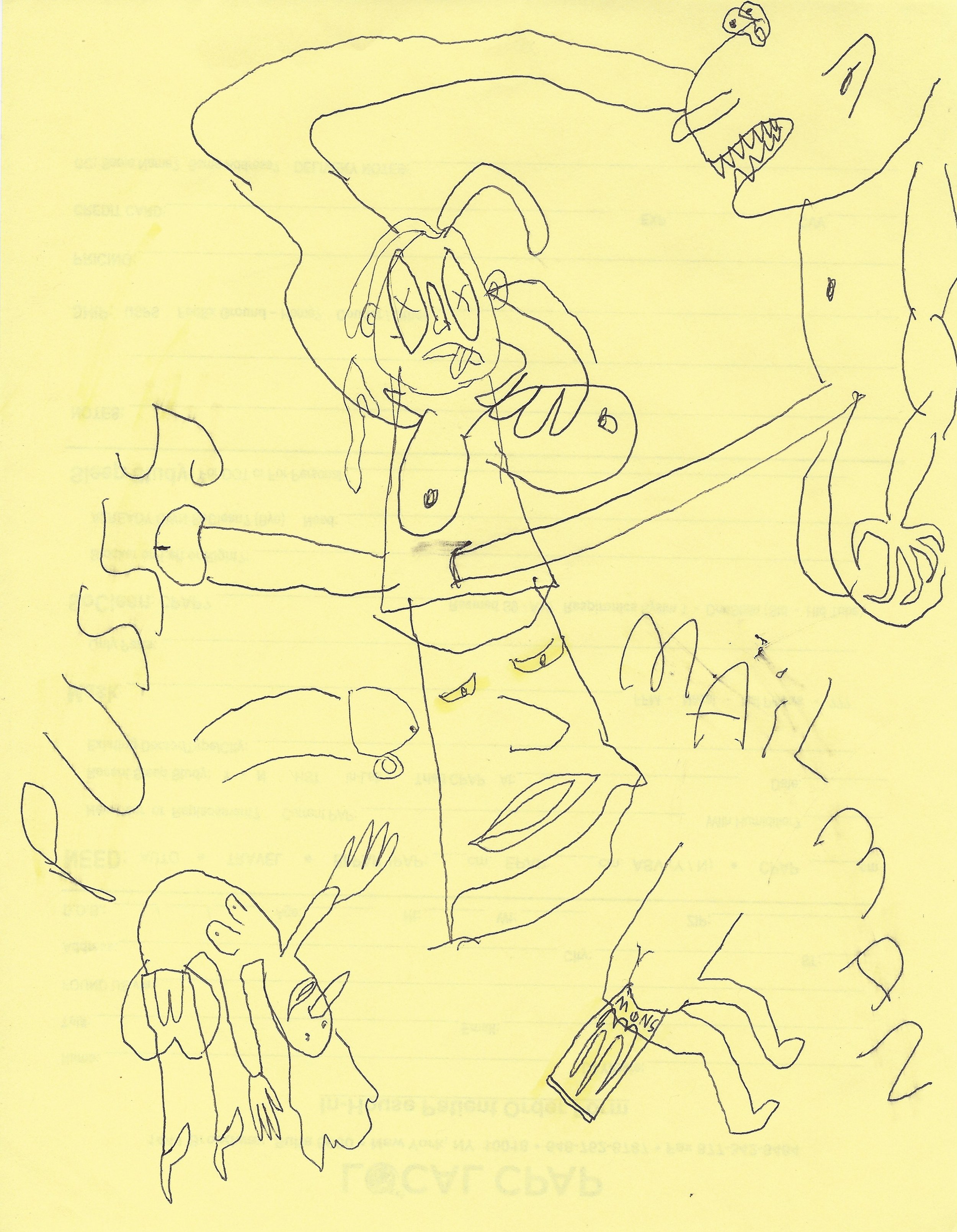

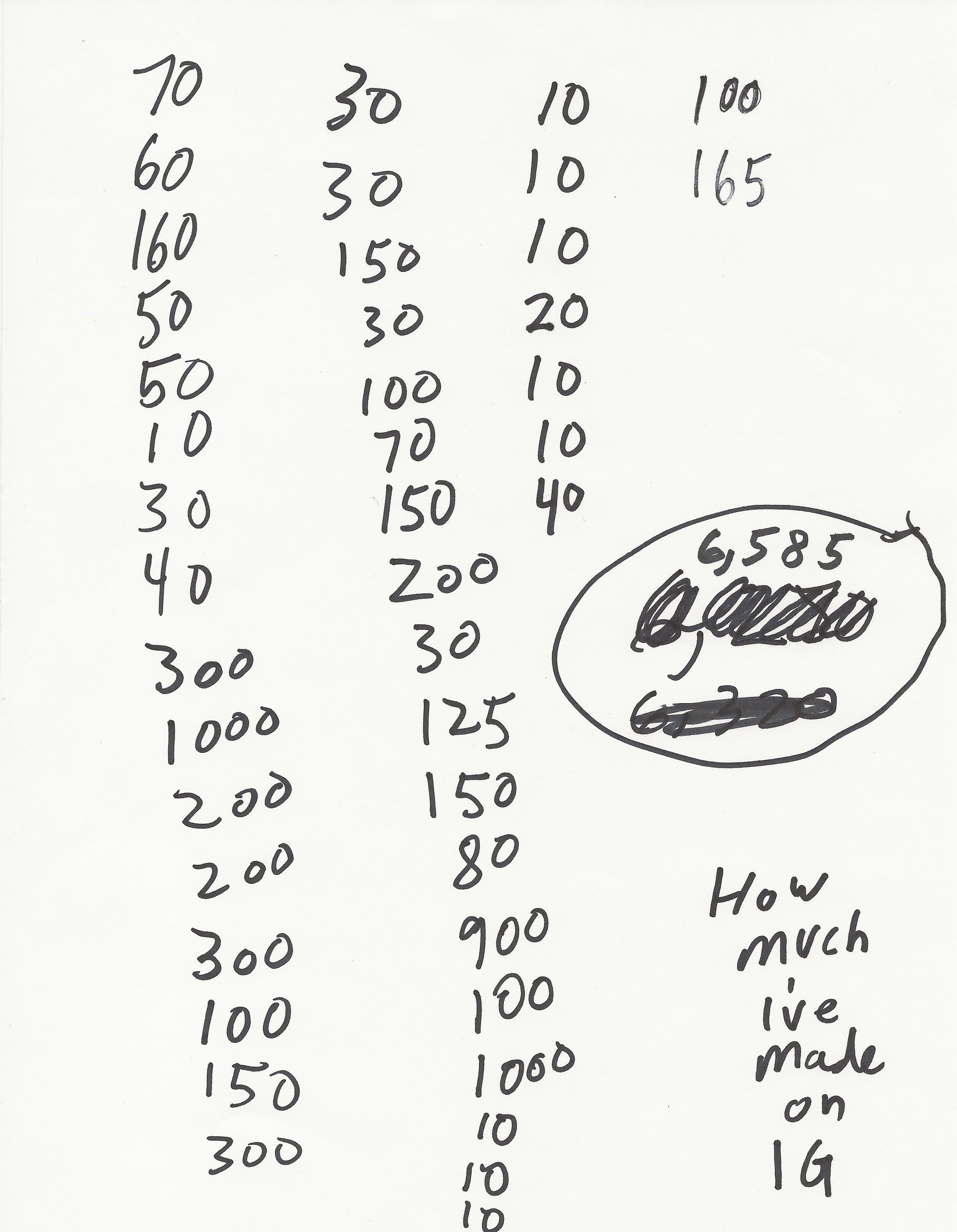





















MEG SPECTRE
“Over The Moon", From the Seminal Broadway Musical 'Rent', 2021. Digital Video. 5:46 min.
Waterloo but I am Overcome with an Extraordinary Sense of Shame, 2020. Digital Video. 2:53 minutes.
Amelia “Meg Spectre” Sylvor Greenberg is an artist and performer from New York City. Her practice aims to explore what is and is not cringe (and why that is so) and create a performance of naive camp by chewing on the concepts of openness and vulnerability, self-indulgence and narcissism, shamefulness and awkwardness, all within the contexts of public presentation and personal understanding. She seeks to achieve this via unironic multidisciplinary work that employs para-fictional persona, cultural-zeitgeisty ephemera, self-referencing motifs, earnestness, honesty, and misdirection—all operating under the ethos of performing, with an emphasis on “song and dance”, “stardom”, and “showmanship”, without the necessary expectation of talent or polish.
“In the musical Rent, the character Maureen performs this number—a poorly conceived, self-indulgent piece of performance art (ironically beset within a musical that might be described by that same language). In this piece, I double down on “Over the Moon.” I wanted to explore what was left in a fictional piece of intentionally bad performance art when deprived of its original context. Do the elements that made it uncomfortable (intentionally, by its architects) remain? Or is it even cringier? The audience of Rent is intended to laugh while watching Maureen perform “Over the Moon”...do they still, if the piece is performed by a lesser performer, in a different setting, and through a different lens? What happens when we consume a piece of uncomfortable performance art out of its original context and instead in a gallery setting, where its viewed in accord with the space-specific rules? The ultimate result is a ‘reverse endurance piece’, in which the audience (rather than the artist) shoulders the burden of discomfort. It is difficult to watch. There is no exit. ”
“The aesthetics of this performance are inspired by the French culinary dish Ortolan, in which diners consume the entire body of a songbird while shrouding their heads—an action taken both to augment the aroma of the meal, as well as to performatively indicate the shame involved in the action. Here, I’ve shrouded myself while singing karaoke of a song I unabashedly love. Karaoke is an inherently self-indulgent activity, understood more as benefiting the performer than the audience. Therefore, in this piece, I am expressing shame while performing—not dissimilar like how a restaurant goer might experience eating Ortolan. Shrouding myself helps augment the experience of the song. Like those who consume Ortolan, I am indulging—shamefully, but gleefully—in the “fragrance” (here, understood to be melancholy). Echoing the lyrical sentiment of “Waterloo”, I am entering a domain in which I will surely discover defeat.”
THE PEPPERONI ZONE
Pumpkin Man, 2018. Digital Video, 0:56 sec
SHOCKING!! SATANIC cult uncovered…, 2018. Digital Video, 0:56 sec
2018’s Song of the Summer, 2018. Digital Video, 2:38 min
The Pepperoni Zone is a creative group formed between Seattle, WA and Brooklyn, NY, focused on writing, acting, and editing surreal comedy videos. Inspired by swamps, the editing style of Doug Lussenhop, dreams, Halloween, and generally whatever makes the members laugh, The Pepperoni Zone released videos weekly from late 2017 to early 2019.
“The Pepperoni Zone’s central idea is that people should have strange fun. It’s fun to feel weird. It’s fun to not know what you’re looking at. Sharing stupid ideas is great. You the creator don’t have to overthink anything when you have an idea; just get it out. People will probably like it. In fact, putting more and more effort into dumber and dumber things is probably Brian’s (the guy who’s writing this) favorite thing in the world because it’s like magic: the idea is stupid, you know it’s stupid and it makes you laugh because it’s so dumb, putting time into a stupid idea is also stupid, but what you get is a genuine piece of art that brings you and others joy. Is this deep art? Well, maybe since it’s at an art show right now, but probably not. But what it is a labor of love that is rooted in five strong friendships and a collective sense of humor and an ethic of sharing unbridled creativity no matter what your mind tells you is too stupid to share. It’s a good exercise. ”
Curator Gregory Uzelac, standing in the exhibition after installation.





